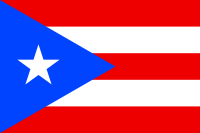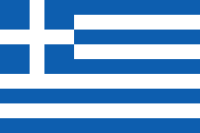
Spirit - Spirit In 1966, before being discovered by Chas Chandler, Jimi Hendrix had a band called Blue Flames in NY. Because two of the players had the same first name, Randy, Jimi referred to them by their home states: Randy California and Randy Texas. Randy California, too young to join Hendrix in England, went back out West and formed the band SPIRIT with his stepfather, drummer Ed Cassidy. Spirit has a decent run of 4 albums from '68-'70 but missed the opportunity to be truly massive by skipping the Woodstock Festival in order to play the Atlanta Pop Festival. Spirit and Zeppelin toured in 1969, leading some to speculate that Stairway to Heaven was ripped off from Spirit's song "Taurus" (4th song on this album - starts around the 11 min mark). Blood Sweat and Tears - Child is Father to the Man BST and Al Cooper took the Beatles orchestral and horn arrangements from Sgt Peppers and ran with it, bringing jazz and rock together in their debut album. My father has this on vinyl and its one of his favorite albums of the decade. Jimi Hendrix Experience - Electric Ladyland The last studio album Jimi Hendrix would complete during his lifetime, and the pinnacle of his use of the studio as instrument. Pioneering use of phaser, wah wah, fuzz, echo and of course a massive and progressive sequence on side C rainy day - 1983 - tides - still raining ... Other standout tracks: Voodoo Chile (slight return), All along the Watchtower, Crosstown Traffic, (Have you ever been to) Electric Ladyland, and Let the Good Times Roll
The Beatles - The Beatles (the white album)
A bit scattered perhaps, compared to Sgt Peppers or Magical Mystery tour, and massively diverse, but still an impressive collection of songwriting from the biggest band of the 60s. At the time, the Beatles as a group were beginning to lose their collective unity (starting with the loss of their manager Brian Epstein) and some songs here are without Ringo Starr on drums (for example Back in the USSR) as he briefly considered leaving the group or simply found the sessions boring. Eric Clapton sits in on "While My Guitar Gently Weeps". Revolution 1 is the tamer version of the hit single "Revolution" without the iconic fuzz guitar. Revolution 9 is an experimental sound collage which sometimes succeeds to be eerie and creepy. The double album has some other great songs such as: ob bla di, julia, birthday, back in the ussr, happiness is a warm gun, helter skelter, and blackbird.
The Doors - Waiting for the Sun
Features the Doors' banned-from-radio anti-war statement "Unknown Soldier" and '68s vision of a future dominated by baby boom youth "5 to 1" (they got the guns but we got the numbers)
The Rolling Stones - Beggar's Banquet The last album with Brian Jones. The Rolling Stones go towards the gutter and the garage. Street Fighting Man sums up the era and year.
The Grateful Dead - Anthem of the Sun
As Jerry Garcia famously said of this record, "we mixed it for the hallucinations". Unable to come up with sufficient studio takes of the 5 songs on this album, the Dead came up with the interesting, and labor-intensive (pre-pro-tools and pre-automation) concept of splicing in live takes, sometimes several live shows at once, into and in between the studio takes. The effect is not crystal clear audio but instead a aural trip. The songs expand, slow down, speed up, cross over and dissolve into other live versions, and multiple takes of multiple drummers make it hard to groove. The Dead are as weird as they would ever get here, and although not commercially successful, it would pave the way for Live/Dead, their far more successful, accesible, and defining album which would be recorded and released in 1969.
In a Gadda Da Vida - Iron Butterfly
Arguably, the first heavy metal album (or was it Steppenwolf's self titled 1968 album, or was it the first Zeppelin album from early '69 or was it Deep Purple In Rock ... ???) and certainly a stoner prototype including an 18 minute hypnotic and jammed out title track.
Music From Big Pink - The Band At a time when the rest of music was getting orchestrated, modernized, heavy, jazzed up and complicated, Bob Dylan crashed his motorcycle, broke a bunch of bones and was forced to hole up at his manager's house for a number of months to convelesce. His backing band for the 1966 tour, the Hawks, relocated to the area, rented a house called Big Pink and spent 1967 working with Dylan on a number of demos later released as "The Basement Tapes". Dylan and the Band took a step back towards folk and country and the Band's debut album was heavily influential on the turn music would take the next year (1969) influencing Crosby, Stills and Nash, and the Dead's two 1970 albums. Eric Clapton admitted he wanted to drop out of Cream and join the Band, and their "hit" from this album, "The Weight" would show up in the movie Easy Rider.
Miles Davis - Miles in the Sky
Recorded a year before the twin fusion masterpieces "In a silent way" and "Bitches Brew", Miles in the Sky is the first Miles Davis album featuring an electric guitar (on two tracks) and also features electric piano (Fender Rhodes). Although neither as memorable, nor as influential as the later albums mentioned, Miles in the Sky is the starting off point for Miles' experiments in fusion jazz which would continue until his temporary retirement from music and public life in 1975.






















No comments:
Post a Comment